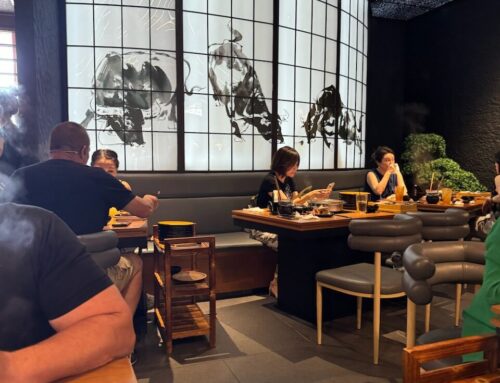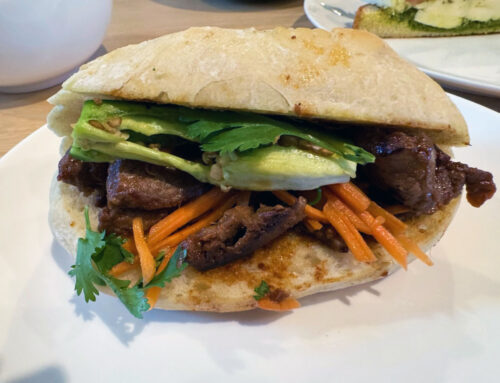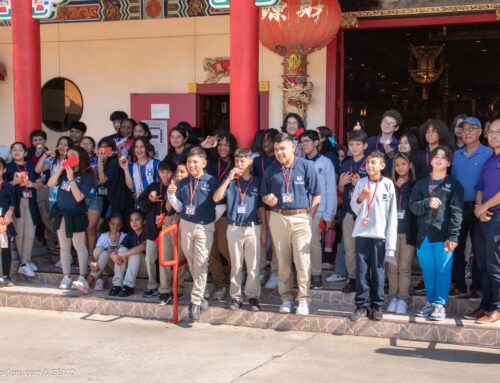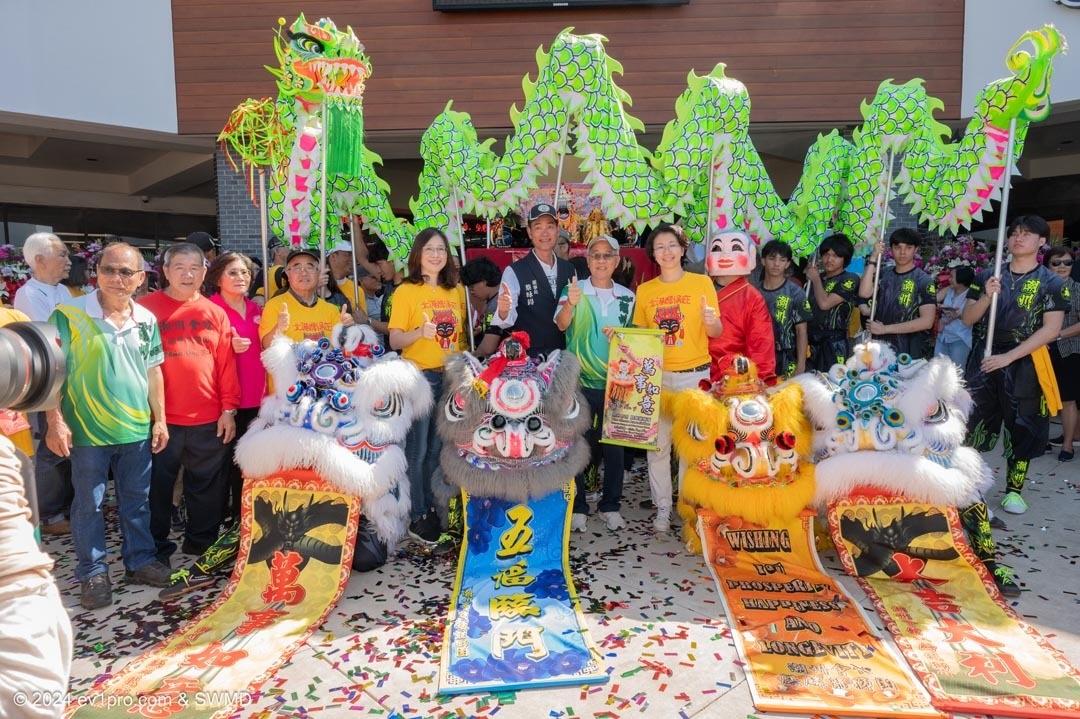
The air was abuzz with drums and cheers as the Beigang Mazu Pilgrimage made its vibrant debut in Chinatown in the Southwest Management District on May 19. Crowds thronged Ranchester Drive, eyes wide with wonder at the colorful banners and lion and dragon dancers moving to rhythmic beats.
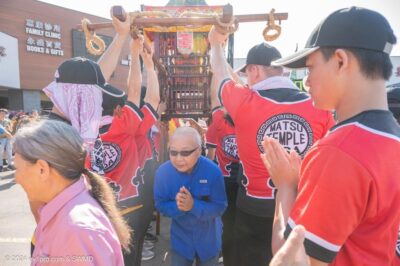 The parade, stretching a mile with an eight-horse mounted escort from the Houston Police Department, reached its climax at Diho Square. Here, an elaborate ceremony unfolded in honor of Mazu, the revered Goddess of the Sea, who is celebrated across coastal communities in Mainland China, Taiwan, and among the Chinese diaspora in Southeast Asian countries.
The parade, stretching a mile with an eight-horse mounted escort from the Houston Police Department, reached its climax at Diho Square. Here, an elaborate ceremony unfolded in honor of Mazu, the revered Goddess of the Sea, who is celebrated across coastal communities in Mainland China, Taiwan, and among the Chinese diaspora in Southeast Asian countries.
“It’s a great day for our city and Southwest Management District,” said Kenneth Li, the district’s board chairman. “We estimated 1,500 to 2,000 residents from various Asian ethnic communities participated in the festivity and rituals to pay homage to Mazu.”
Cherished much like the Virgin Mary in Western culture, the goddess’ story began in Fujian, China. Originally a young woman named Lin Moniang, she was said to possess extraordinary powers to tame rough seas to protect sailors and fishermen. Her death at 28 following her heroic rescue of her father and brother during a storm earned her the title Mazu, or “Mother Ancestor” in Chinese. The seafaring communities built temples in her honor, cementing her as their guardian.
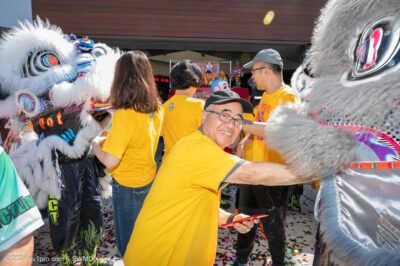 Houston was one of the three stops in the U.S., which also included San Francisco and New York City, for the Mazu pilgrimage initiated by Chao Tian Temple in Beigang, Taiwan. Locally organized by the Houston chapter of the Taiwanese Association of America and co-sponsored by Southwest Management District, the festivity in Chinatown quenched a thirst for spiritual empowerment by the Taiwanese and other Asian communities while bringing blessings to all Houstonians, Li said.
Houston was one of the three stops in the U.S., which also included San Francisco and New York City, for the Mazu pilgrimage initiated by Chao Tian Temple in Beigang, Taiwan. Locally organized by the Houston chapter of the Taiwanese Association of America and co-sponsored by Southwest Management District, the festivity in Chinatown quenched a thirst for spiritual empowerment by the Taiwanese and other Asian communities while bringing blessings to all Houstonians, Li said.
“It also allowed us to demonstrate the rich multiculturalism in the management district and beyond,” he said. “The recognition would also help boost commerce here.”
Featuring a sacred statue of Mazu from the 330-year-old Chao Tian Temple, the parade through Chinatown led by the temple leader Tsai Yong-De and the subsequent ceremony at Diho Square were a vivid display of a cultural and spiritual practice from the Far East.
Aside from dragon and lion dances by members of the local Teo Chew Association and Junior Chamber of Commerce, a team of bearers comprising local Taiwanese and members of the Chao Tian Temple carried Mazu’s palanquin adorned with vibrant decorations to the square for the worship and celebration.
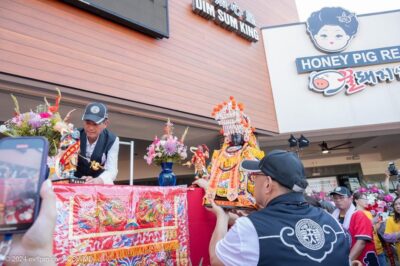 In a traditional ritual, devotees waiting in a long line were invited to take turns passing under the palanquin as it was carefully lifted by the carriers, a sacred act believed to bestow good fortune and safety upon followers.
In a traditional ritual, devotees waiting in a long line were invited to take turns passing under the palanquin as it was carefully lifted by the carriers, a sacred act believed to bestow good fortune and safety upon followers.
Devotees were also offered talismans for protection, known as “peace amulets,” which had been blessed during ceremonies at the Chao Tian Temple in Taiwan.
Following the ceremony at Diho Square, the pilgrimage proceeded to Teen How Taoist Temple near downtown Houston for more devotees to pay their respects and receive blessings from Mazu’s presence.
“This was the debut of the Mazu pilgrimage in Houston and our management district,” Li said. “The event was held on a relatively small scale as an initial trial. I hope this will become an annual celebration here, as I believe it doesn’t matter where you are from originally, we can all be united with the same aspiration for peace and love.”
– By Zen Zheng



